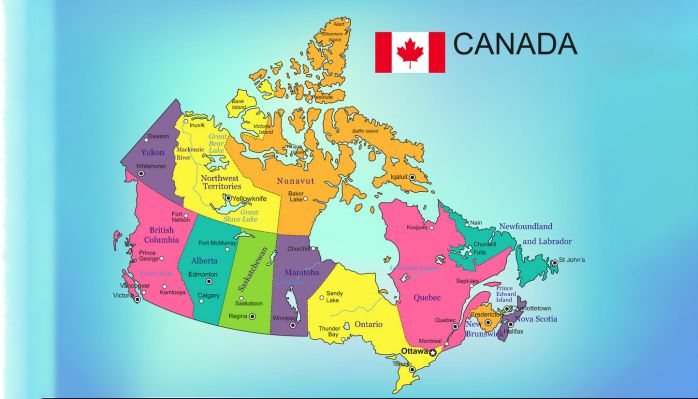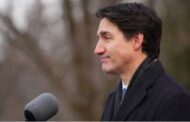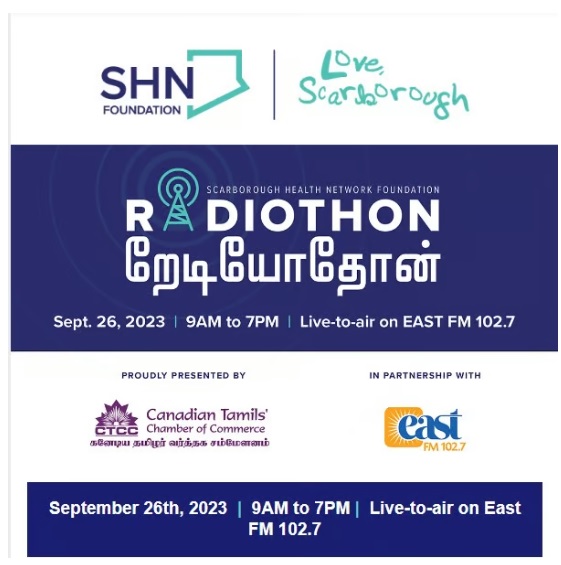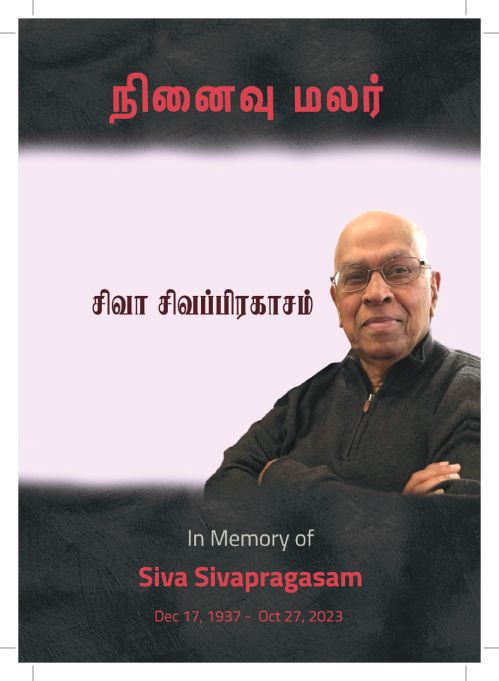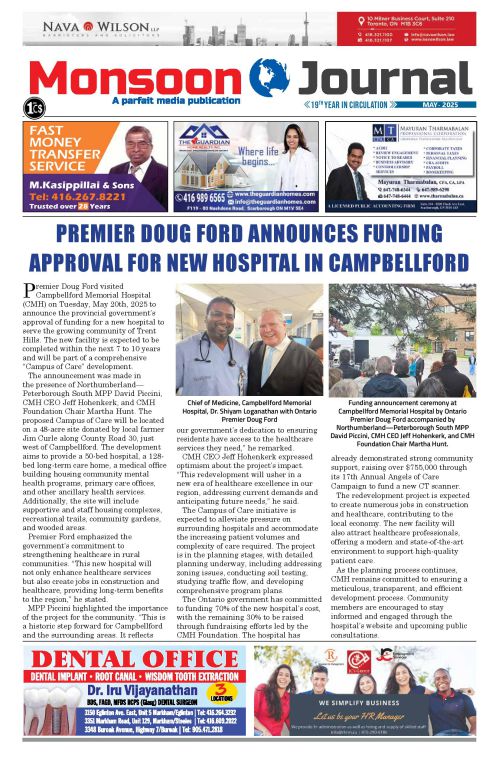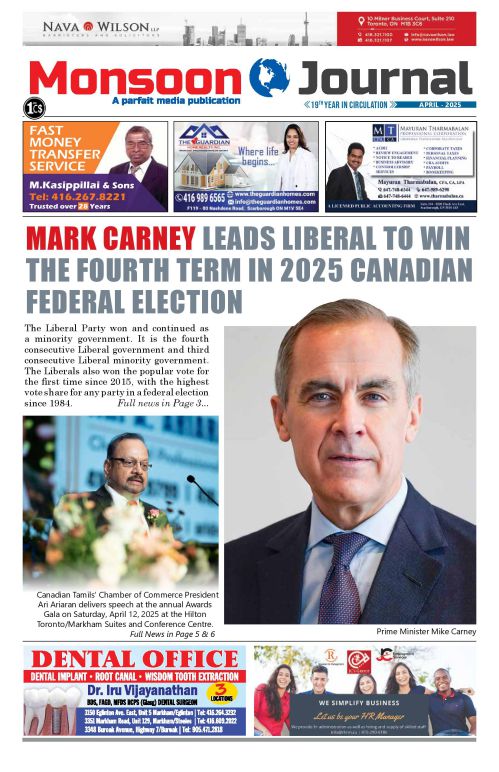Arul S. Aruliah
Post-Second World War Canada is a treasure house of the world population. The object of the Census is to count them all correctly on a given date, like taking a snapshot of the nation, and then analyzing it for social and economic composition, including that for parliamentary seats allocation where warranted. Canada’s population in 2016 was 34.5 million and is currently at 37.5 million.
Census is taken by Statistics Canada every five years, and the next data collection is scheduled to be on Tuesday, May 11, 2021. Census information is the basis for making informed decisions about the local community as well as Canada as a whole. Filing of the completed Census form is a legal requirement and privacy of the personal data is protected. The information is made available to Library and Archives Canada (LAC) 92 years after the Census Year, so that it will be available for ‘family members, genealogists, historical researchers, academics and journalists. ’Statistics Canada is not interested in the residency status of a person nor does it share any private information with any other departments. But all must be counted in the completed form.
LearningFrom 2016 Census Data
The Last Census was held in 2016. People in Canada have identified themselves in about 280 ethnic identities. Some elect to go to microlevel identity, or they are unable to pinpoint to a specific ethnicity as they are the products of 300 years of cross interactions. It will be interesting to note that 13,700 people in Nova Scotia declared their ethnicity as Nova Scotians, same as what 3,925 Ontarians did, while 194,560 had identified themselves as Quebecois. And it happens with every ethnic identity. It is not that only some of them are Nova Scotians, just that they could not identify with any specific heritage after the nth generation.
There are about 130 language groups in the Census, commencing with 19.5 million (m)people with English as their First Language and mere 90 Alaskan and Western Canada native people identifying Tlingit as their First Language.
The total South Asian population in the 2016 Census is about two million, inclusive of 1.35m East Indians, 0.22m Pakistanis and 0.15m Sri Lankans. Chinese population is 1.77m out of 3.1million East Asians in Canada, inclusive of 0.84mFilipinos, 0.24mVietnamese and0.2m Koreans.
It is imperative that accurate data is submitted when completing the census form. It is a challenge for Statistics Canada to compile accurate ethnicity data unless the data providers are specific when providing the information. Census forms used to guide the people in the past about ethnicity, not anymore. As noted earlier, no personal data will be identified for 92 years after the Census Day, at that time it may become useful if and when your great grand children search for their roots.
People of Origins with Tamil Heritage
The focus of this article is on people with origins in Ceylon/Sri Lanka and Tamil language. Tamil community is one of the largest single ethnic groups in Canada within the last four decades, with over 90% of them with origin in Ceylon/Sri Lanka. Country’s name was changed from Ceylon to Sri Lanka in 1972 and immigration from Ceylon has been since the 1950s.
The ethnic composition of people with origins in Sri Lanka from the 2016 Census is shown in Table_1 and the Census data by language spoken at home is shown in Table_2. The data shown in both Tables illustrate how ethnicity and heritage data have been interchanged in the data providers’ mind. 171,470persons have identified Tamil as their languageat home that appears to be within range with Sri Lankan and part of Tamils total in Table_1.Children from mixed marriages shall identify both of their heritages. However, multi-ethnicity identified in the Table appears to be too significant for a relatively new community and may require further analysis.
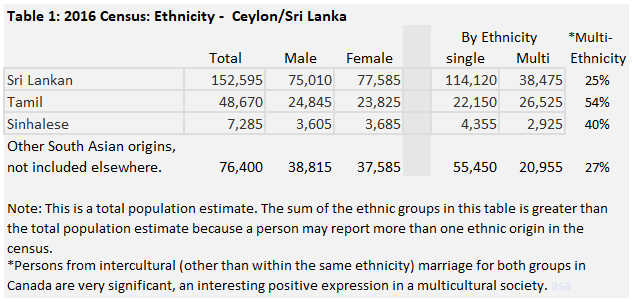
It should be noted that a significant amount of data does get merged in other categories. For instance, a Tamil born England who had migrated to Canada might select Britain for his parents’ place and his first language as English, and he/she would not be counted in Table 1 and might get collated into Other South Asian Origins from other data points in the Census.
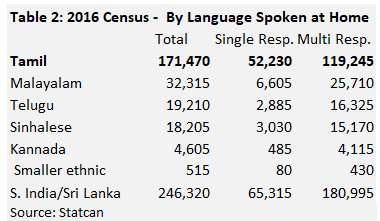
This is illustrated by the sharp difference for the Sinhalese population in the two Tables. 18,205 persons have identified Sinhala as the language spoken in home while less than half of that number have identified as Sinhalese by ethnicity. It is more than likely that the heritage selected was Sri Lankan rather than the specific ethnicity. Ceylonese or Sri Lankan is not an ethnicity but a nationality.
Similarly, a Tamil child born in Canada, who has grown up with English as the first language in a second -generation home, may not include Tamil as the language spoken at home and may not include Tamil for heritage as well. Again, that person’s census data is unlikely to be collated in the above categories. The essence being that the data shown above is as good as the data input by the data provider. Yet, the available data provides a good snapshot.

Tamil population according to Census Canada, and allowing for dispersion of data as explained above, shall be around 180,000 in 2016. That appears to be in line with an estimate of Tamil population by the author in 1994, a total rounded to 68,000 as shown in Table 3, published by the Centre for Refugee Studies at York University, in Refuge, V14, 4 (1994).
2021 Census Forms
It is therefore important to file Census forms accurately without any bias for raw data. Census information is collected by a Short Form, known as 2A, (search: census form 2A), and by Long Form 2A-L on randomly selected households with a lot more detailed data collection. Only one of it, either 2A or 2A-L, will be used for a given household. Long Forms in 2016 were used in about 25% of the households, hence it may hold a small margin of statistical error with some numbers.
Short Form collects data on the Language (Section 9(a), (b) & 10)and Long Form collects Sociocultural information for ethnicity data (19-23).Of the Short Form, question 9 (a) is what language this person speaks on a regular basis at home? And 9 (b)requests which one does this person speak most often at home. These questions are tough one in a bilingual household. The next question(10) is what language first learned at home in childhood and still understands. Invariably this will likely be mother’s language. Census Canada is interested in multi-ethnicity of a person as well.
Heritage and Nationality
Educators have abundantly demonstrated that children who are fluent in more than one language are adept at good learning, and this is unwittingly captured in Q19 – 23 in the Long Form for Language and Ethnicity, and of these, Q22 and Q23 are important. Q22: Even those who can understand but cannot speak will be advised to include other home languages. Q23 refers to a person’s ancestors, that is heritage, that is always a linguistic heritage and not that of a country.
Within Canadian or other western nations context where Tamils are a relatively recent migrants heritage needs to be identified as simply Tamil irrespective of their country of heritage origins, Sri Lanka, India, or any other country. It is pertinent to note, however, that even the much earlier settlers in Malaysia or Singapore had continued to identify themselves as either Ceylon Tamils or Indian Tamils, the two components of the Tamil culture. Both identities will eventually merge into simply Tamil in countries like Canada and other western nations. A good evidence of that evolution is that Canadian Tamil Chamber of Commerce that was previously founded as Canadian Ceylon Tamil Chamber of Commerce.
Ceylon Tamils and Upcountry Tamils are now known as Sri Lankan Tamils with Ceylon Tamil being a heritage identity, while Sri Lankan Tamil is the nationality. For Tamil people irrespective of their origins, the language is Tamil, and the ethnicity as well is Tamil. If Ceylon Tamil is used in the Census Form, it may get collected under South Asians.
Census Data Analysis
Initial analysis of Census data by Statistics Canada takes about a year for preliminary data summary and much longer for detailed analysis. Census information will be available in a few languages, including Tamil, and many indigenous languages. However, the data needs to be submitted in English or French by online or by paper. The 2016 Census was about 90% online and this year it is likely to be near total contactless Census data gathering.
Do visit Census Canada website https://tinyurl.com/yfsv9bnu.





